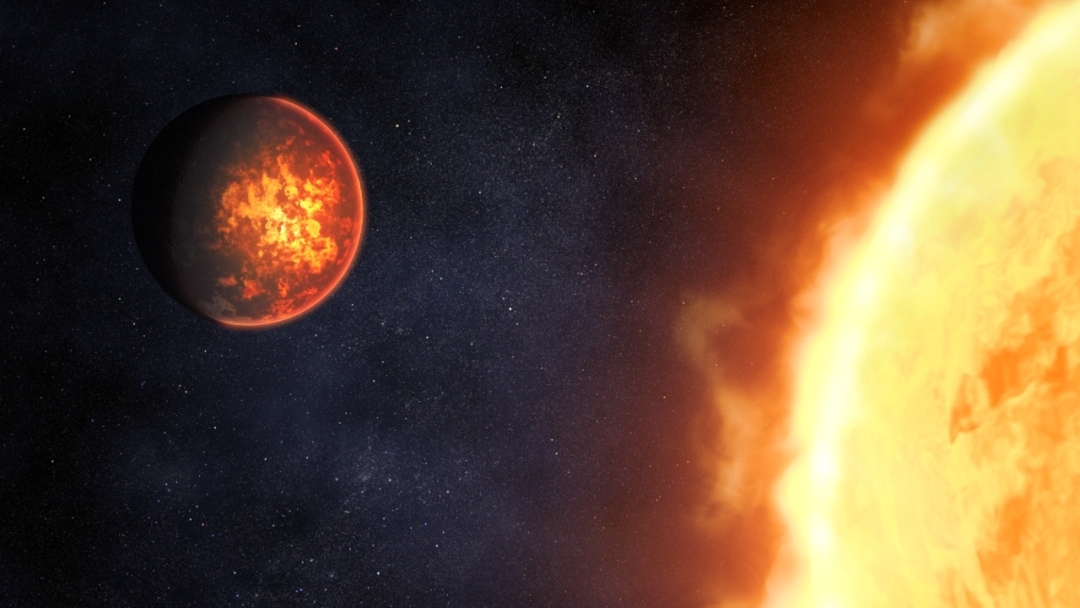Burning planet discovered by NASA !

55 Cancri e, also known as Janssen, orbits a star called Copernicus only 41 light years away. The molten surface is completely uninhabitable, but above the burning horizon, Janssen’s sister planet, Galileo, hangs in a dark sky. Silicates in the atmosphere would condense into clouds on the tidally-locked planet's darkside reflecting the lava below. So, the skies would sparkle.
55 Cancri e is a super-Earth exoplanet that orbits a G-type star similar to our Sun. Its mass is 8.08 Earths, it takes 0.7 days to complete one orbit of its star, and is 0.01544 AU from its star. Its discovery was announced in 2004.
Astronomers discovered the planet in 2004 after looking at the spectrum of its parent star, 55 Cancri A, one of two stars in a binary system about 40 light-years from Earth in the constellation Cancer. There are at least four other planets in the same system, mostly discovered before 55 Cancri e. The team (led by the University of Texas at Austin's Barbara McArthur) discovered subtle tugs on the parent star that could be explained by the presence of yet another planet. While the planet's existence was challenged by a second research team in 2005, a separate team in 2006 confirmed it.
Astronomers initially thought 55 Cancri e (abbreviated 55 Cnc e) had an orbital period of 2.8 days, but measurements in 2011 showed that the planet is much closer to its parent star. Observations with Canada's MOST (Microvariability & Oscillations of STars) space telescope demonstrated an orbital period of less than 18 hours. Researchers estimated the surface temperature of 55 Cancri e could be as high as 4,892 F (2,700 C).

